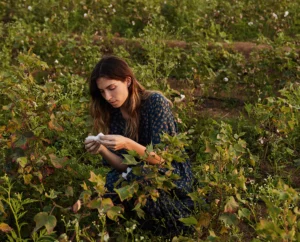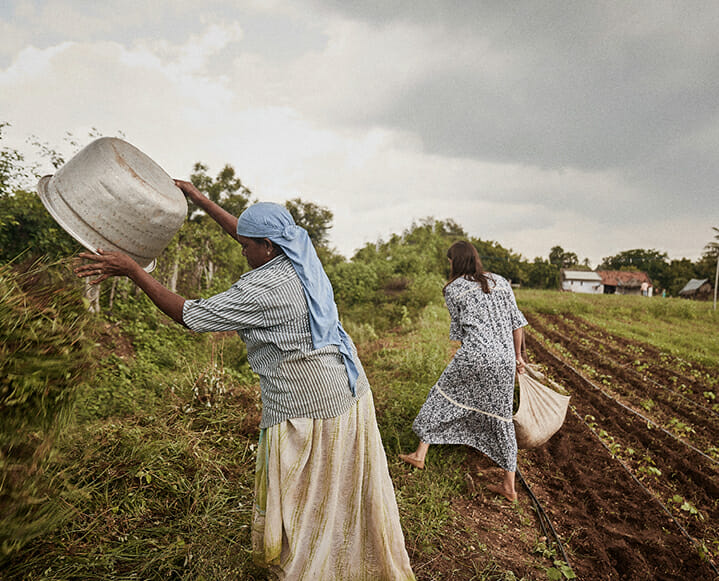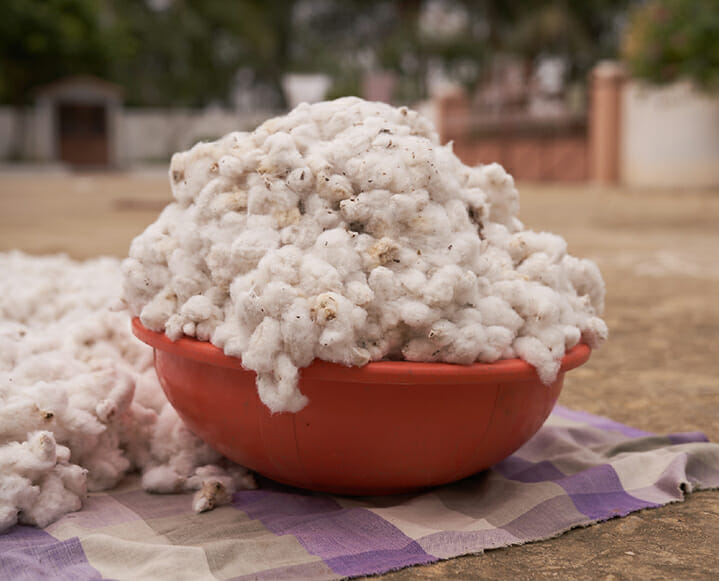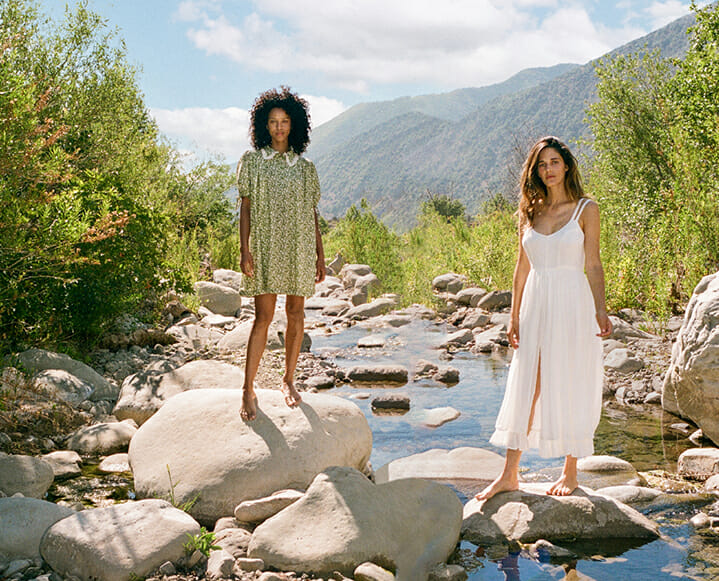
Meet Mairin Wilson, Director of Regenerative Practices at Christy Dawn -- a role we never would have dreamed existed for a fashion brand just ten years ago. Mairin is part of the brand's "farm-to-closet" initiative in which the brand bought their own cotton farm in India to create a positive and sustainable change from the ground up.
If you're not familiar with the Christy Dawn brand (hard to believe if you're a long-term reader!), you may recognize their beloved prairie dresses -- made from recycled 'deadstock' prints and found in the closet of mindful fashion lovers everywhere.
We asked Mairin to unpack the brand's journey to India and tell us more about her career in sustainable practices...
Would you explain Christy Dawn's overall take on sustainable fashion in a nutshell?
The core of everything we do at Christy Dawn is about reciprocal relationships. We work to build positive feedback loops, where in order for one person or ecosystem to win, everyone wins.
Tell us a bit about your sustainable fashion background and why you're passionate about it?
My mom owns a fabric store, so I grew up sewing my own clothing with her. After I got a degree in environmental science, I realized I could marry my academic interests with my love of clothing and textiles.
Prior to working at Christy Dawn, I worked with cotton farmers globally to ensure they were being paid equitably. The fashion industry has a lot to improve on, but I love working with creative and innovative people who are moving the industry in the right direction.
Not long ago, the brand decided to get into regenerative cotton farming. How did that move from deadstock to regenerative cotton come about? Did you have sourcing issues that inspired the idea?
We believe deadstock is sustainable, but it is still taking leftovers from a toxic system. Christy and Aras, our founders, wanted to find a solution that goes beyond sustainability and find a way to make clothing that also heals Mother Earth and her community. We started looking for existing regenerative farms, but after coming up dry, we decided to create our own with our partners Oshadi Collective in Southern India.
Tell us about how you discovered the land and started the farm?
It was all very divine timing. I reached out to Fibershed, a non-profit that focuses on sustainable textile systems, to see if they knew anyone doing small-plot regenerative cotton farming. Coincidently, Nishanth, the founder of Oshadi Collective, reached out to Fibershed on the very same day. He was looking for a brand to partner with and had four acres to grow cotton. We have been working with Oshadi ever since.
Shop the Farm to Closet collection
Does the brand hope to eventually make all their own garments from the farm?
We are now stewarding 80 acres and are starting similar projects with other fibers. We eventually (hopefully very soon) want all of our raw materials to come from farms that we have a personal relationship to. For example, we are working with alpaca producers in Peru who regenerate the soil the alpaca graze using selective grazing and peatland restoration.
There's a big human health issue connected with conventional cotton farming, especially in places like Texas and India. Can you talk to us about that?
Yes, conventional cotton farming can be very toxic in both the chemicals used and the treatment of workers. I like to think about a fast fashion cotton t-shirt. There is a very good chance that some or all of the cotton in that shirt was hand picked in a farm that uses toxic chemical inputs, then machine spun and knit, then dyed with toxic dyes, and sewn by someone. After all that labor intensive work, the t-shirt only costs a couple dollars, which means everyone along the way is losing, including the environment.
Consumers can get really overwhelmed by the variety of sustainable values and keywords to pay attention to. Can you tell us what the real value of this regenerative farm initiative is?
For the planet: I think of this on both a micro and macro scale. The main purpose on the farm is to improve long term soil health. That means increasing biodiversity, water retention, mycelial networks and soil carbon.
The benefits of healing the soil go way beyond the direct farm, because we are drawing down excess atmospheric carbon as we go, directly combating climate change. Additionally, the farmers are creating a model that their neighbors and cotton farmers globally can use.
For the farmers: Even in systems marketed as sustainable, there is often a top down approach, where companies tell farmers “if you transition to [fill in blank with sustainable buzzword], we will buy your yield.” This approach puts all the risks of switching methods on the farmers’ backs. That is why we decided to pay for the process we wanted and worked collaboratively with the farmers to help them transition to regenerative farming. This gives the farmers both financial security and freedom to take risks to help the long-term vitality of their soil.
For the fashion industry: I think what I am most proud of with Christy Dawn’s journey towards regeneration is how authentic it is. We are always going back to what feels best for us and makes sense for us, rather than trying to fit in an existing box. I think that is how we made so much progress in the last few years. And, we were able to show the industry that, if you do something authentically, you can have a positive impact on your direct and global community.
For consumers: Like I said, Christy Dawn is all about reciprocity, so we want our customers to benefit from being a part of this circle. For some, that is the ability to wear clothing that aligns with your values, for others that is that Christy Dawn dresses last forever or that they make them feel more confident and beautiful.
What should we shop from the collection? Can you walk us through which pieces are from the farm?
A majority of our cotton dresses are now from our farm. When you shop on our site, you can see a little icon in the top right of our product images that says regenerative cotton. My personal favorite from our spring collection is this Lennon dress.
We also now offer a very exciting land stewardship investment for our customers: you can invest $200 to cover all the costs of regenerating 3485 sq ft of cotton farmland. At the end of the season Christy Dawn will buy back the yield from the plot you invested in at a set price. You get to share in the risks and rewards of working directly with nature.
What's next for the brand?
Keep regenerating! We are starting to work with communities all over the world of like-minded people, who want to grow our clothing regeneratively. Look out for a very cute collection of regenerative sweaters coming this fall!
Who else in the fashion space is making big sustainability moves that we as consumers should be supporting now?
I am always turning to Mara Hoffman’s team for advice and support. They really have an amazing vision and are true leaders in the space.
The post Why This LA Fashion Brand Bought A Farm: Let’s Talk About Regenerative Fashion appeared first on The Chalkboard.
from The Chalkboard https://ift.tt/rsmNEF4
via IFTTT

No comments:
Post a Comment